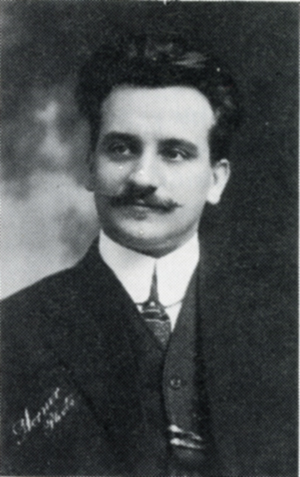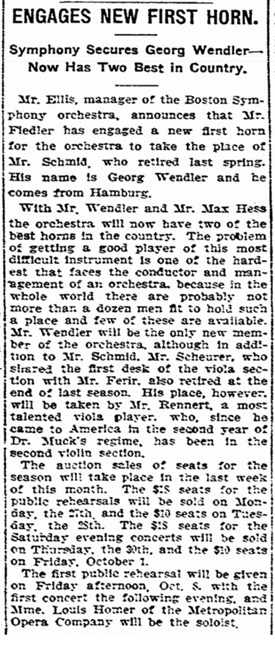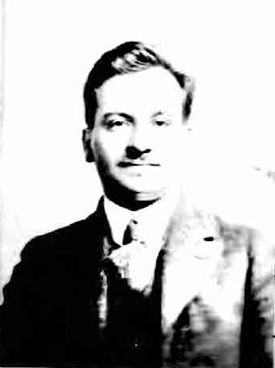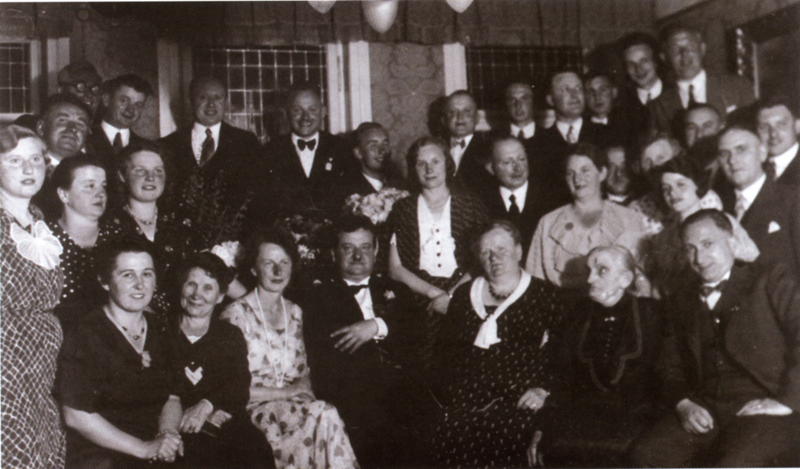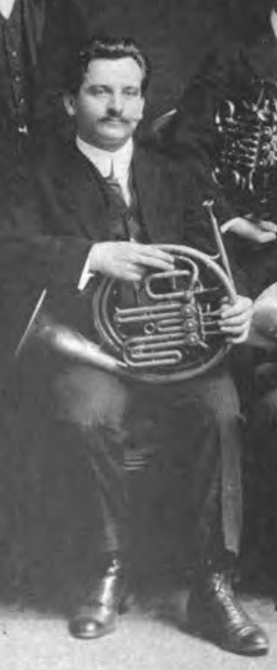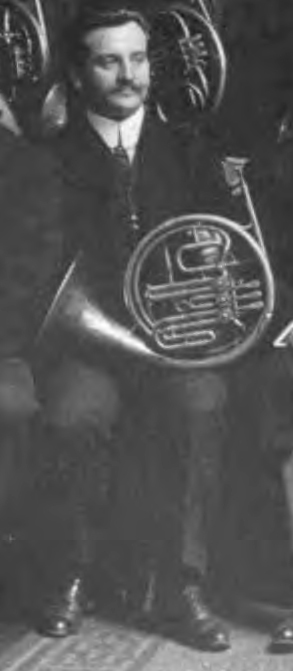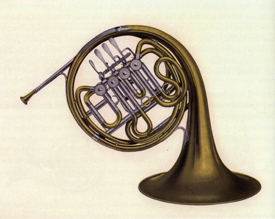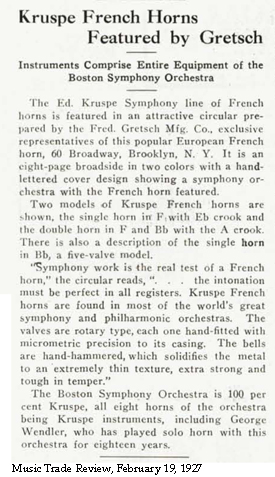Notes
1. In 1911 Georg and his first wife,
Dorothea, returned to Germany to visit his father, Guido. Other
possible family members include a
Guido Wendler, born
June 6, 1881, who was killed in action in 1917, and
Günther
Wendler who was given power of attorney for Georg at
Ed.
Kruspe in 1924 while he continued in the Boston
Symphony.
(back)
2.
Wilhemina Lotte Dorothea
[Wendler] was born on October 7, 1888 in Wandsbeck (or
Wandsbek), Germany, one of the boroughs of Hamburg. She probably
met Georg while he was the principal horn in the Hamburg State
Philarmonic. Her family name has not been found, however she
later mentions having two uncles, Edward Keeck (or Kieck) living
in Buffalo, NY, and Theo. Riese living in Chicago. In May 1914,
she returned to Hamburg Germany to visit family. While there she
witnessed the start of World War I in July and the following
month she applied for an emergency passport at the American
Consulate General for the purpose of "protection." Her Chicago
relatives, Theodor (70) and Auguste (60) Riese were also
passengers on the S.S. Olympic on the return trip in
September.
(back)
3. Georg stated his address as 6148 Morgan
St, Chicago. It appears that he and Dorothea spent the time
between their arrival at Ellis Island and settling in Boston by
visiting her uncle,
Theodor Riese or other family in
Chicago. On October 20, 1909
Theodore F. Reise (son of
Theodor and
Auguste Reise) and
Anna Dohl were
married in Chicago. Unfortunately the Wendlers probably had to
miss this family event since it fell between the second and
third weekly concerts of the Boston Symphony.
(back)
4. He was certainly hired by conductor,
Max
Fiedler, based their previous association in Hamburg. The
BSO had a total of eight horns organized into two
quartets. The other members of his quartet were
William
Gebhart,
Albert
Hackebarth, and
Carl Schumann. The first
quartet was headed by
Max Hess
and included
Heinrich
Lorbeer,
Franz Hain,
and
J. Phair.
(back)
5. The
Harvard Crimson (March
31, 1911) also listed the following as the first work on the
program: "Mozart, 1756-1791. Waldhorn and pianoforte. Sonata,
G-minor. I. Moderato--Presto. II. Large--Allegro commodo."
(back)
6. Apparently
Max Hess had been the
principal horn for the Waldhorn Quartette in 1908. The original
official photograph of the group including Mr. Heim shows Mr.
Hess standing at the left with his
Bopp single
horn. In the
June 1910 Edison Phonograph
Monthly photograph, Mr. Wendler's head has been
superimposed atop Mr. Hess's torso, however the horn he is
holding is Mr. Hess's Bopp and not his own Kruspe compensating
double. Mr. Wendler is listed in the caption, so he is no doubt
the one who made the recording (see Larkey, 1976).
(back)
7. Douglas Yeo (1988) shows Mr. Wendler
replacing Max Hess in the 1912-13 season, which is possible
depending on when Mr. Hess had his unfortunate tooth accident.
No change in seating was noted in the printed Programmes,
however, until the start of the next season. For the first
concert of the 1913-14 season there were only six horns listed.
Albert Hackebarth,Wilhelm Gebhart, and
J.
Phair had left the section, and
Bruno Jaenicke joined
to take Mr. Wendler's place as second principal. By the second
concert, however, the full complement of two quartets was
restored with the addition of
Alfred Resch and
Erwin
Miersch.
(back)
8.
Max Hess had played the
world premiere of Mahler 5 in Cologne under the composer's
direction on October 18, 1904. He was heard again when the
Boston Symphony Orchestra first performed it in 1906, in Boston,
New York, and
Philadelphia.
It wasn't played again by the B.S.O. until the
April 19, 1913
concert, probably with Max Hess playing the third movement horn
obbligato once again. Probably to feature the other two horns in
the section, the February 27 1914 performance of Mahler 5
was followed by Richard Wagner's
A Siegfried Idyl.
(back)
9. The article's headline was
"Shall Doktor Kart Muck with His 23 Enemy Aliens Play in Concert
To-Night? Not if Patriotic Societies, Outraged Citizens and
Thousands of Protests Can Prevent It! Carnegie Hall Flings Wide
Open Its Doors to Kaiser's Own Music Director." One reason given
in addition to the orchestra's many German musicians was that
music director Dr. Karl Muck, who was still a German citizen,
had not been opening concerts with the "Star Spangled
Banner." In fact the B.S.O. had already been banned from several
other U.S. cities. The concert was held as scheduled, however,
to a sold out house, with Dr. Muck under police guard, and yes,
he did play the "Star Spangled Banner."
(back)
10. Since she had been away for an
extended period of time, Wilhelmine Lotte Dorothea Wendler was
required to sign an Affidavit to Explain Protracted Foreign
Residence and to Overcome Presumption of Expatriation (Form 213
Consular) at the U.S. Consulate in Hamburg in order to obtain a
return passport. She further explained that "It is now necessary
for me to remain pending the settlement of her estate and for
other personal business."
(back)
11. George Wendler was probably
aware of Ilse from the time she was a child since the horn he
preferred to use was the Gumbert-Kruspe model developed in 1906
by Fritz Kruspe and Edmund Gumpert and shown in the photos
above. Wendler was probably already using this horn before
coming to the United States in 1909 and very well could have
purchased it personally from Ilse's father, Fritz Kruspe, at the
Ed. Kruspe firm in Erfurt.
(back)
12. Johann Eduard Kruspe was born
in May 9, 1831 and was only three years old in 1834, the date
used by Firma Ed. Kruspe for its founding. In fact Mr. Kruspe
did not establish the company under his own name until 1864,
however he had taken over the workshop of Carl Christian
Zielsdorf, which had been established circa 1834. Hence the date
1834 actually refers to the founding of the parent company by
Zielsdorf.
(back)
